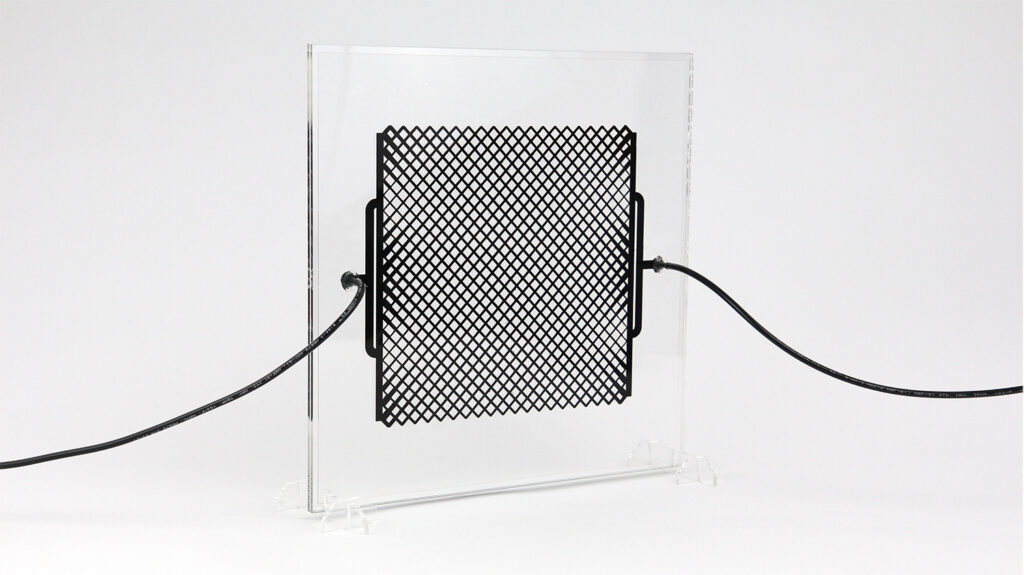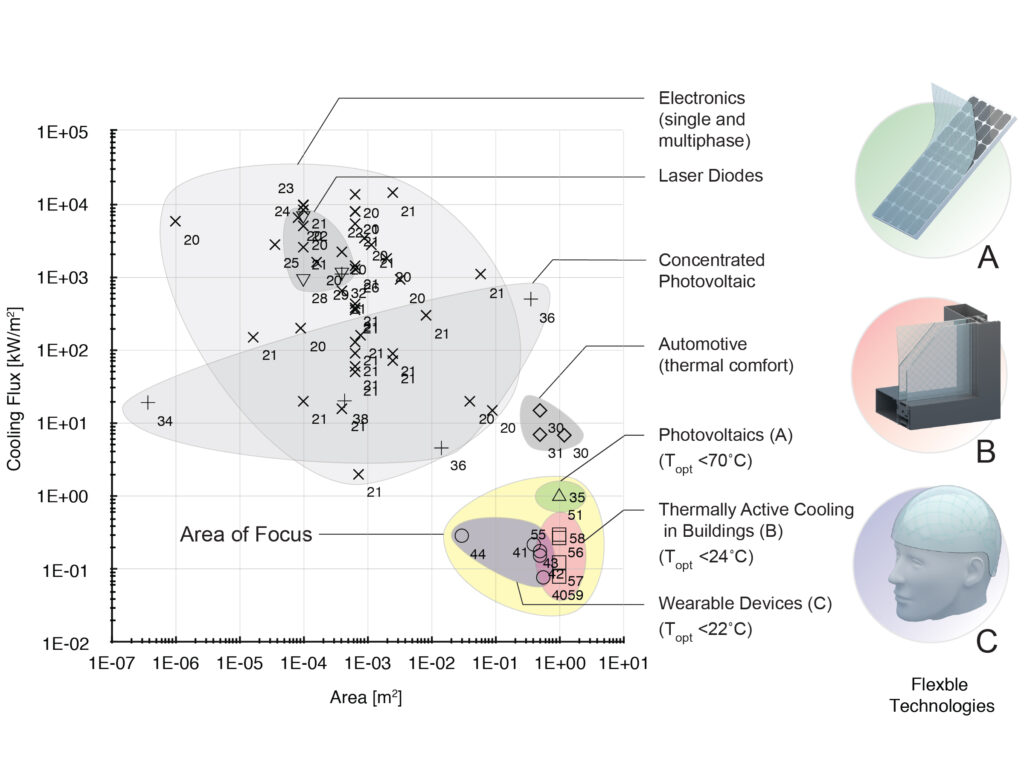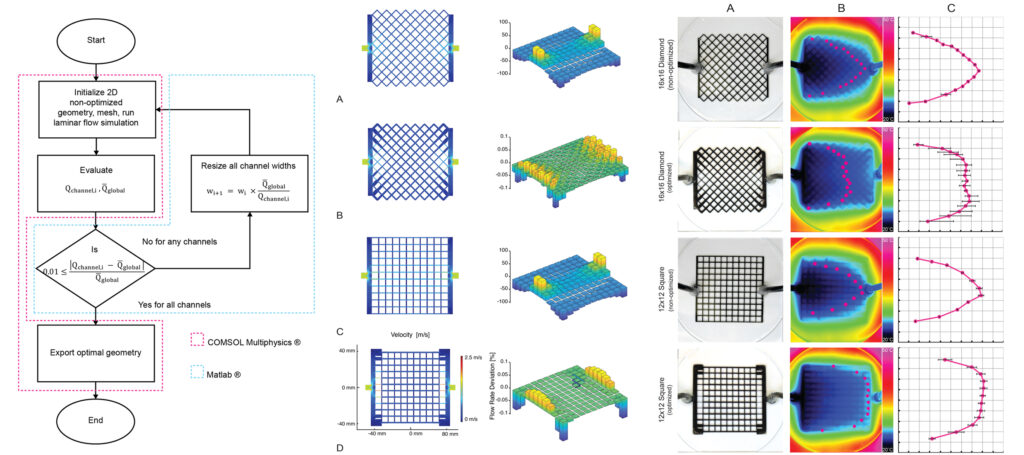Grinham Research Group
Harvard University Graduate School of Design
Thin Film Cooling
Cooling
Project Overview
In this study, we report a paradigmatic shift in bioinspired microchannel heat exchanger design towards its integration into thin film wearable devices, thermally active surfaces in buildings, photovoltaic devices, and other thermoregulating devices whose typical cooling fluxes are below 1 kW/m2. The transparent thermoregulation device is fabricated by bonding a thin corrugated elastomeric film to the surface of a substrate to form a microchannel water-circuit with bioinspired unit cell geometry.

Innovation
Project Team
Jonathan Grinham
Matthew J. Hancock
Kitty Kumar
Martin Bechthold
Donald E. Ingber
Joanna Aizenberg
Inspired by the dynamic scaling of flow systems in nature, empirically derived sizing
rules and a novel numerical optimization method implemented in MATLAB® with COMSOL Multiphysics® are used to maximize the thermoregulation performance of the
microchannel network by enhancing the uniformity of flow distribution. The optimized network design results in a 25% to 37% increase in the heat flux compared to non-optimized designs. The study demonstrates the versatility of the presented device design and architecture by fabricating and testing a scaled-up numerically optimized heat exchanger design for building-scale and wearable applications.


